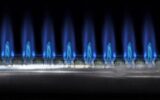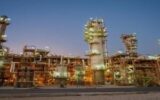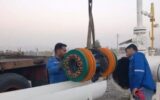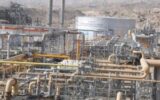
With the successful completion of major repairs in operational areas and equipment preparation, the Southern Zagros Oil and Gas Exploitation Company announced that it will produce about 162 million cubic meters of gas, 17,000 barrels of oil, and 48,000 barrels of gas condensate daily during the cold season, playing its strategic role in providing the country with sustainable energy.

The head of the country's Passive Defense Organization said: "By maintaining production continuity during the imposed war and implementing passive defense strategies, the South Pars Complex was able to ensure the country's energy security with the support of its employees."

More than a year has passed since the announcement of the Seventh Development Plan; a five-year plan that, by considering major goals such as "increasing production capacity to 4.8 million barrels per day," "increasing petrochemical production to more than 131 million tons per year," and "increasing annual gas exports to more than 40 billion cubic meters," has set a challenging path in the oil and gas sector.

A spokesman for the Tehran Provincial Gas Company announced the consumption of more than 57 million cubic meters of gas in the past 24 hours in the domestic, commercial, and industrial sectors of the province, a 67 percent increase compared to the same day last week.

The CEO of the National Iranian Oil Company, emphasizing the oil industry's full readiness to sustainably supply the country with gas during the cold season, called for a facilitative approach from regulatory institutions to effectively support the industry's national missions.

The maintenance supervisor of the third refinery of the South Pars Gas Complex announced that the refinery is fully prepared to enter the cold season.

The Director of Region 6 of Gas Transmission Operations, emphasizing the need to maintain maximum stability of gas transmission in the southern routes of the country, announced: The monitoring operation of 255 kilometers of pipelines was carried out simultaneously with the participation of the Iranshahr, Kerman, and Sirjan operation centers.

Negotiations for importing gas from Russia are underway, and the two sides have put various technical and financial issues on the table. The last understanding between the two countries was to send about 150 million cubic meters of Russian gas to Iran from Azerbaijan.

The analysis of gas consumption statistics in the first week of November indicates a change in the consumption pattern in the country at the same time as the temperature has decreased in recent days; So that the consumption of the domestic and commercial sectors exceeded that of the power plants.

The Operations Manager of Fajr Jam Gas Refining Company announced continuous improvement programs and optimization plans in production processes, saying: "Despite the refinery being nearly 40 years old, implementing continuous measures, in addition to reducing energy consumption, increases the refinery's productivity."










